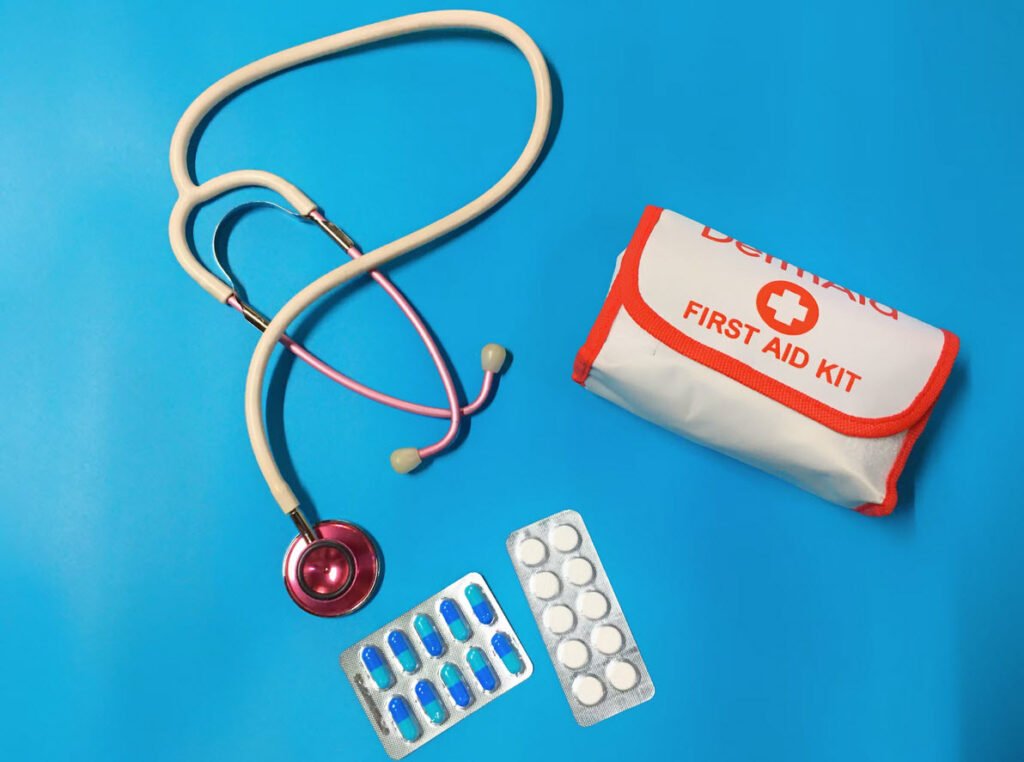Wilderness adventures such as hiking, camping, or backpacking often take us far away from the conveniences of modern medical care. While the thrill of nature’s beauty is exciting, it also comes with the risk of injury, which can become serious when help is miles away.
Knowing a few first aid techniques can be crucial in ensuring safety and survival until professional assistance arrives.
In this article, we’ll explore ten important first aid tips for handling wilderness injuries.
- Managing Scalp Wounds
- Improvising Splints for Broken Bones
- Cleaning Open Wounds
- Using Nasal Spray to Stop Superficial Bleeding
- Managing Pain in the Wild
- Preventing Frostbite
- Handling Nosebleeds
- Removing Foreign Objects from the Skin
- Removing Rings and Jewelry After an Injury
- Easing Pressure from Nail Injuries
1. Managing Scalp Wounds
Scalp wounds tend to bleed profusely due to the rich blood supply to the head. If someone sustains a scalp injury and they have long hair, a useful technique is to tie the hair into a knot to help close the wound temporarily.
This simple method can help reduce bleeding until proper medical care can be administered. Always ensure that pressure is applied on the wound and it is kept clean to avoid infection.
2. Improvising Splints for Broken Bones
In the wilderness, you might encounter situations where a splint is necessary to stabilize an injured limb. If a person injures their leg, wrist, arm, or ankle, you’ll need to immobilize the affected area to prevent further damage.
Fortunately, you can use items readily available in nature or your gear. Branches, twigs, fishing rods, tent poles, or even the barrel of a gun (after ensuring it’s unloaded) can serve as effective splints. To create a sling, you can pin a person’s shirt sleeve to the front of their shirt with a large safety pin, helping to steady the arm.
3. Cleaning Open Wounds
Open wounds can be particularly dangerous in the wild due to the risk of infection. If you do not have access to sterile supplies, you can clean a wound by using water in a plastic bag. Puncture a small hole in one corner of the bag to create a steady stream of water to irrigate the wound.
Cleaning the wound as thoroughly as possible helps to remove dirt and bacteria, reducing the risk of infection. Afterward, apply pressure to stop the bleeding, and keep the wound elevated above the heart if possible to slow the blood flow.
4. Using Nasal Spray to Stop Superficial Bleeding
You might be surprised to learn that nasal spray can be used as an emergency tool to stop superficial bleeding. The active ingredient in nasal sprays, which constricts blood vessels, can help slow bleeding when applied to a wound. Simply spray the bandage with the nasal spray and place it on the bleeding area to reduce blood flow.
This can buy you valuable time in the wilderness when waiting for further medical help.
5. Managing Pain in the Wild
Pain from wounds, sprains, or breaks can be intense in the wild, but there are ways to manage it using basic supplies. Liquid Benadryl (Diphenhydramine) can be applied to a bandage and placed on the wound to help numb the area.
For more serious pain, taking two acetaminophen (Tylenol) and three ibuprofen (Advil or Motrin) together every eight hours can provide significant relief. However, be cautious if you have asthma, as ibuprofen can potentially trigger an asthma attack.
6. Preventing Frostbite
In cold or extreme conditions, frostbite is a real concern, especially for your fingers and toes. To keep your hands and feet warm, try an exercise that forces blood into your extremities.
Swing your arms in large circles, which pushes blood to the capillaries in your fingers, helping to prevent frostbite. Similarly, for your legs, perform high knee marches or swing your legs to promote blood flow to your toes.
7. Handling Nosebleeds
A nosebleed in the wilderness can be an uncomfortable distraction, but fortunately, it’s easy to manage. The most straightforward way to stop a nosebleed is by pinching the nostrils shut while tilting your head slightly forward (not backward, to prevent swallowing blood).
Maintain this position for 10-15 minutes. If this doesn’t work, blowing your nose a few times can sometimes clear out clots, allowing the bleeding to stop.
8. Removing Foreign Objects from the Skin
Getting stuck with quills, cactus thorns, or tarantula hairs is not uncommon in the wilderness. You can use an unconventional method to remove them: hot wax or duct tape. Heat a small amount of wax and carefully apply it to the affected area.
Once it hardens, peel it off, pulling the thorns or quills with it. Duct tape works in a similar way—press the tape onto the skin and pull it away quickly to remove the irritants.
9. Removing Rings and Jewelry After an Injury
After suffering an injury to the hands or fingers, it’s crucial to immediately remove any rings, bracelets, or watches. These items can act as constrictors if your hand or fingers swell, cutting off circulation and leading to more serious issues.
By removing them right away, you prevent complications like tissue damage or necrosis, allowing swelling to occur freely without constriction.
10. Easing Pressure from Nail Injuries
If you drop a heavy object on a finger or toe, it can cause blood to pool under the nail, creating painful pressure. A quick fix to alleviate this discomfort involves heating a small object, such as a paper clip or a nail, and carefully piercing the nail to release the trapped blood.
The immediate relief from pressure can prevent further damage and reduce pain, but caution is needed to prevent burns or further injury while performing this procedure.
Final Thoughts
Injury in the wilderness can be daunting, but being prepared with the right first aid knowledge can make a significant difference. Whether you’re treating scalp wounds, stopping superficial bleeding, or dealing with frostbite, the key is to act quickly and efficiently while minimizing the risk of infection or further harm.
Furthermore, always carry a basic first aid kit and learn how to use it effectively in combination with the tips provided here. While these measures may not substitute for professional medical treatment, they can provide essential care that could be life-saving in an emergency.
Prepare for the unexpected, stay calm, and use these tips to handle wilderness injuries with confidence.



